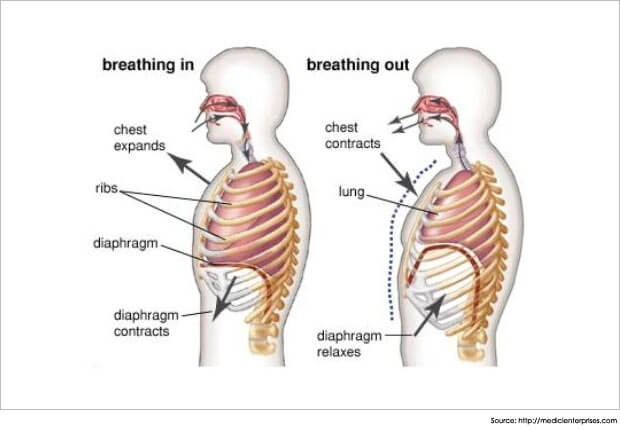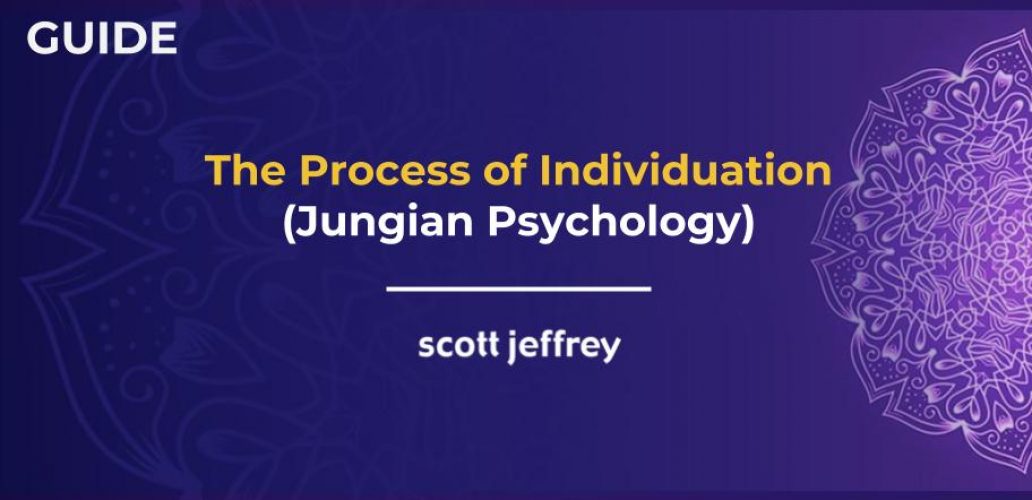
How to Breathe Like a Jedi to Increase Mental Clarity, Energy, and Emotional Resilience
by Scott JeffreyOVERVIEW: This breathwork guide breaks down the essential ingredients of how to breathe properly to reduce anxiety, improve your energy, enhance mental clarity, and strengthen emotional resilience.
______________
I was a very anxious teenager. In college, I was plagued with overwhelming stress during midterms and final exams.
I tormented myself with what-if scenarios: What if I freeze during the exam and totally blank out? What if that one topic that I can’t quite grasp is the central theme of the exam?
This stress led me to make unnecessary errors, lowering my overall test-taking performance. I made myself utterly miserable. I hated learning. Plus, the excessive emotional tension wrecked my physical health. In my freshman year alone, I made a dozen trips to the health service center.
Fortunately, in my sophomore year, I was introduced to a few breathing techniques. Using these techniques helped calm my mind when I began to feel overwhelmed by exam time.
The results were extraordinary. I became proficient in test-taking, but more than that, I found the remainder of my college education far more enjoyable.
For the last two decades, my interest in breathwork has continued. Here’s a summary of what I’ve learned thus far …
Table of Contents
- The Benefits of Proper Breathing
- Self-Test: Are You Breathing Correctly?
- Why It’s Necessary to Learn How to Breathe Properly
- Four Elements of Breath Work
- How to Breathe Deeply
- How to Breathe Steadily
- How to Breathe Slowly
- How to Quiet Your Breath
- Learn How to Breathe Properly … Fast
- Two More Tips on How to Breathe Properly
- The Natural Tranquilizer: 4-7-8 Breath
- Recap: How to Breathe Properly
- Read Next
The Benefits of Proper Breathing
Breathing affects all of our bodily systems, feelings, and moods in profound ways.
In an age where most humans are in a constant state of anxiety—an over-activation of the sympathetic nervous system—proper breathing provides a healthy means of reducing anxiety, restlessness, and stress.
By activating the parasympathetic nervous system, proper breathing promotes inner calm and physical relaxation.
The brain uses up to three times as much oxygen as our muscles do.
Proper breathing increases the oxygen in our bloodstream, making more oxygen available to our brains. This improves brain function, which translates to more physical energy, mental clarity, and greater productivity.
By learning to direct your attention to your breath, you can condition yourself to shift out of stressful, depressed, and aggressive states and enter relaxed, calm, and resourceful mental states.
The short-term benefits are obvious: you become better equipped at handling difficult situations, managing conflicts, and maintaining focus while you work.
Because effective breathing improves your body’s response to stress, its long-term benefits include longevity and a higher quality of life.
Self-Test: Are You Breathing Correctly?
Here’s a quick test:
Place your left hand over your navel and your right hand over your chest.
Breathe normally (however you usually breathe without thinking about it).
Which hand(s) is moving? Left, right, or both?
If the hand over your chest is moving, you probably have a shallow breath. That is, you’re drawing insufficient oxygen when you breathe. This leads to fatigue and increases the chances of feeling anxiety.
If the hand over your navel is moving, you’re probably breathing properly. This is called diaphragmatic breathing.
To breathe from your belly, you need to expand and contract your diaphragm, which provides more oxygen to your lungs.
If both hands are moving while you breathe, you probably have a combination of the two.
Why It’s Necessary to Learn How to Breathe Properly
From one perspective it seems somewhat silly: Why do you need to learn how to breathe properly? Don’t you do that involuntarily?
Breathing is both a voluntary and involuntary function.
Involuntary breathing is an automatic bodily process. Voluntary breathing occurs when you bring your awareness to the process of breathing.
Infants don’t yet have the cognitive capacity to breathe voluntarily. We enter this world breathing involuntarily. And as infants, we breathe beautifully. No lessons needed.
Ever watch a baby sleeping? His belly inflates like a balloon with every inhale. We are born breathing diaphragmatically.
So what happens?
Emotions—mostly negative emotions like fear. Science is just beginning to understand the effects emotions have on our brain and the autonomic nervous system.1
Children are containers for their parent’s emotions. Whatever they feel, their child absorbs.
And so slowly, infants begin to adopt their parent’s anxieties.
As soon as they do, they begin to breathe like their parents: shallow breaths, mostly from the chest.
It’s as if incorrect breathing is taught subconsciously, from generation to generation.
Four Elements of Breath Work
So “proper breathing” is really natural breathing. In learning how to breathe properly, you are consciously training yourself to re-learn what once came naturally to you.
Here are four elements that illustrate how to breathe properly:
- Breathe deeply
- Breathe steadily
- Breathe slowly
- Breathe quietly
Now let’s look at ways to improve each of these four elements.
How to Breathe Deeply
Breathing deeply means breathing with your belly instead of your chest.
Remember that chest breathing promotes anxiety and emotional imbalance; belly breathing promotes relaxation.
As you inhale, draw the air deep into your lower abdomen, imagining a balloon expanding in that region.
Exhale and allow the balloon to slowly and steadily deflate. Be sure not to force the air out of the balloon. Simply allow the air to release naturally. Relaxation comes mainly from the exhale, not the inhale.
To breathe with your diaphragm, simply place your awareness on your navel as you breathe.
Sometimes it’s also helpful to place one or both of your hands over your navel as we did in the experiment above. Observe your hand moving like a balloon as your stomach inflates on the inhale.
Again, avoid using any force. Simply observe the process of breathing with your lower abdomen.

How to Breathe Steadily
Generally speaking, your breathing should be rhythmic. You want the time of your inhales to match the pace of your exhales.
Try starting with a count of three. At a comfortable pace, inhale for a count of two and exhale for a count of three.
Be sure that you’re not feeling any tension or force as you breathe.
If a three count is too little for you, raise it to five.
How to Breathe Slowly
Your goal is to make each inhale and exhale as long as possible without straining.
Most adults in a resting state breathe an average of 12 to 18 cycles per minute. This translates to a complete inhale and exhale cycle of three to five seconds.
Trained internal martial artists, in contrast, extend a single breath cycle to 15 seconds, comfortably completing only four cycles in a minute.
The fewer cycles per minute, the better. A slow breath cycle coincides with greater awareness, alertness, centeredness, and relaxation.
You can train your body to breathe at slower and slower rates.
Start by setting a timer for a minute and count how many cycles you complete. Try this a few times to establish a baseline. Record the results.
Then, periodically take conscious breaths at a three-count (count to three on the inhale and again on the exhale). Once the count becomes comfortable, move it to four, five, etc.
After 30 days, use a timer again and see if you have extended your average breath cycle.
How to Quiet Your Breath
As I began to spend more time observing my breathing, I noticed a relationship between my breathing patterns and my thoughts.
Coarse, erratic, and louder breathing coincides with racing thoughts, rumination, and various neurotic tendencies.
With slow, steady, deep, quiet breaths, I noticed my thought stream tends to recede into the background of my consciousness. Sometimes, the thoughts seem to stop altogether.
In addition to breathing slowly and steadily, you ideally shouldn’t hear air coming in or out of your nose or mouth.
To quiet your breath, do not force the air on your exhale and do not rush to draw the air in on the inhale. That is, breathe naturally—without effort.
Proper body alignment also helps you further quiet your breath:
- Imagine your head suspended above your spine with a golden cord extending from the crown of your head into the sky.
- Gently tuck your chin.
- Avoid slouching your shoulders or arching your lower back.
- Keep both feet firmly on the ground.
To learn all the key elements of proper posture and alignment, see this guide.
Learn How to Breathe Properly … Fast
The key to adopting any new skill is to follow an effective method with as much awareness and focus as possible.
So for this exercise, place your full attention on the process of breathing.
You don’t need to invest a great deal of time to learn how to breathe properly. One conscious breath is worth more than 20 unconscious breaths.
The very process of observing your breath often quiets your mind. A quiet mind is less agitated by emotions and more receptive to learning.
Once you’ve retrained yourself to breathe properly, you will once again breathe correctly without conscious awareness.
Whenever you consciously breathe, notice how you feel. Observe any tingling or other sensations in your head or body.
See if you feel more relaxed and calmer than before you did the exercise. Paying attention to the effects of your practice provides the feedback necessary for effective learning.
Plus, you’ll notice the benefits when you breathe correctly, anchoring the positive experience in your subconscious. This will fuel your efforts.
If you don’t pay attention to the results you’re experiencing, you’ll find little reason to continue experimenting and practicing when the novelty wears off.
Two More Tips on How to Breathe Properly
First, inhale through your nose. Breathing with your nose gives you better control of the breath and warms the air when you inhale.
Inhaling with your nose is almost always advisable. However, there are breathing techniques, like the method illustrated below, that advises exhaling through the mouth.
Second, gently place your tongue on the palate where the back of your front teeth meets the roof of your mouth.
This is actually proper tongue posture. The tongue is supposed to remain against the palate most of the time—except when eating, drinking, and talking.
This will help you relax your jaw, enabling you to steady your breath.
The Natural Tranquilizer: 4-7-8 Breath
Now that you’ve tasted the effects of conscious breathing, perhaps you’d like to experiment with a different breathing technique.
This particular method is excellent to do when you want to relax, before bed, or before meditating. Dr. Andrew Weil calls it a “natural tranquilizer.”
- Sit with your back straight, head looking in front of you. Your tongue gently presses against the roof of your mouth. Close your mouth, not tightly but loosely.
- Inhale slowly, steadily, and deeply (into your belly) through your nose for a count of four. Your inhale should be steady and consistent for the entire four-count.
- Hold your breath for a count of seven.
- Exhale through your mouth, again slowly, calmly, and steadily, making a slight whoosh sound. Exhale for a count of eight. Be sure not to push the air out forcefully when you start to exhale.
This completes a single 4-7-8 breath. Repeat this cycle three more times to complete your first session.
For this particular technique, the duration you spend counting isn’t important; the ratio of time (4-7-8) apparently is. After a matter of weeks or months, you’ll be able to slow down your count or double it to an 8-14-16 count.
You may feel lightheaded when you first use this method, but this sensation will pass.
Weil recommends doing four cycles of the 4-7-8 breath twice a day, moving to eight cycles once you get comfortable with the method.
Recap: How to Breathe Properly
Now you know how to breathe properly:
- Breathe consciously by placing your awareness on your breath.
- Breathe slowly, extending the inhale and exhale over time.
- Breathe steadily at a rhythmic pace by counting inhales and exhales.
- Breathe quietly by not forcing the air in or out while maintaining proper posture.
- Breathe deeply by placing your awareness on your lower belly.
- Breathe mainly from your nose.
- Allow the air to release on the exhale; never force it.
- Keep your tongue gently pressed against your palate as you breathe.
Notice any sensations or shifts in your mental functioning during and after conscious breathing. This will reinforce your learning and fuel further practice.
When you want to focus on a project, steady your breath.
As you’re wrestling with a difficult decision, breathe naturally.
When you’re having trouble with a friend, family member, or colleague, tune your breath … again and again.
Bringing your body and mind back into balance doesn’t need to take hours. You can tune your breath and quiet your heart in a matter of minutes, if not seconds.
So take a deep breath and have an awesome day …
Read Next
7 Powerful Meditation Tools to Help You Train Your Mind for Higher Performance
Sleep Hacking Guide: 30 Tips to Improve Your Sleep
A Beginner’s Guide to Using the Best Nootropics to Access Your Brain’s Potential
The Definitive “Underground” Meditation Guide: Secrets to Effective Mind Training







